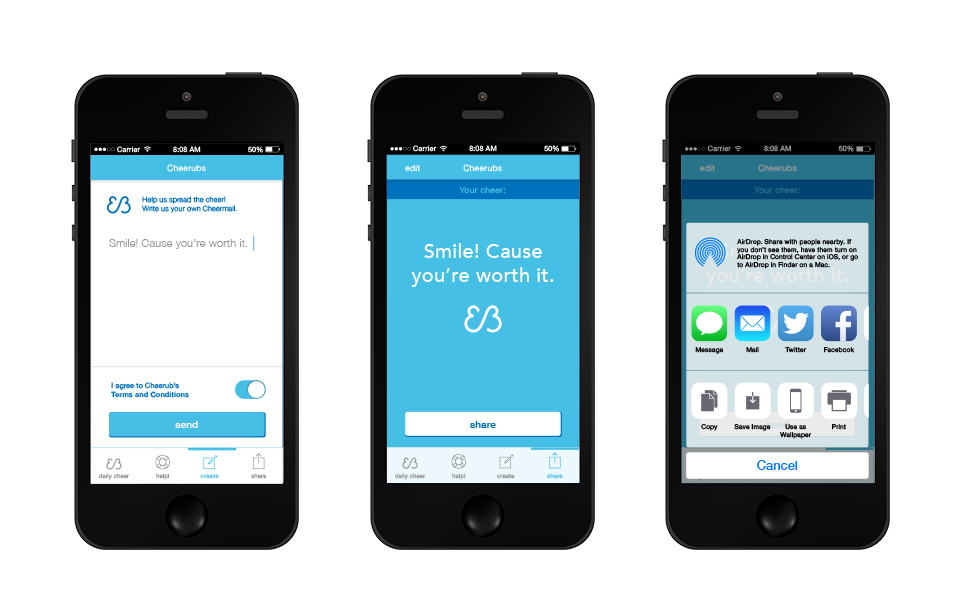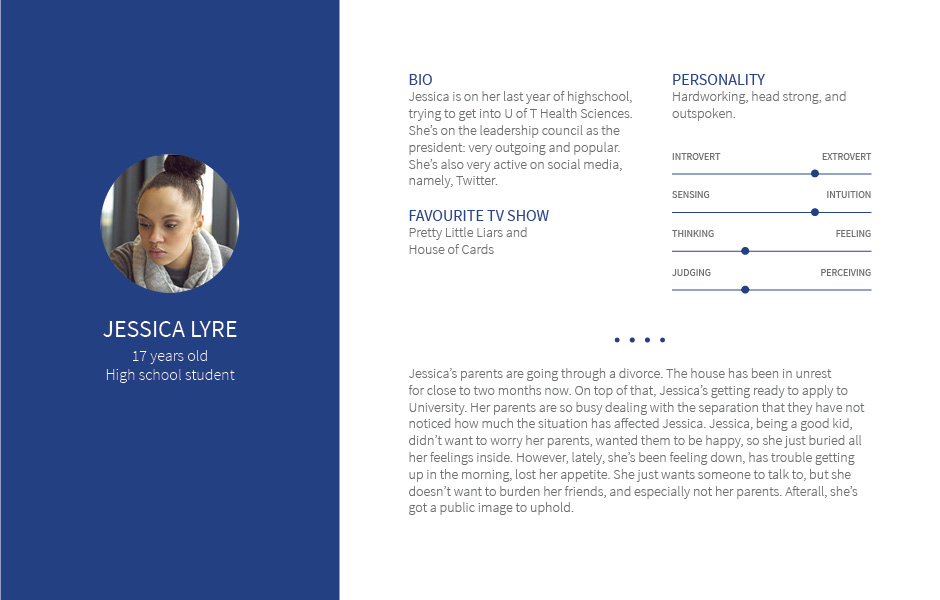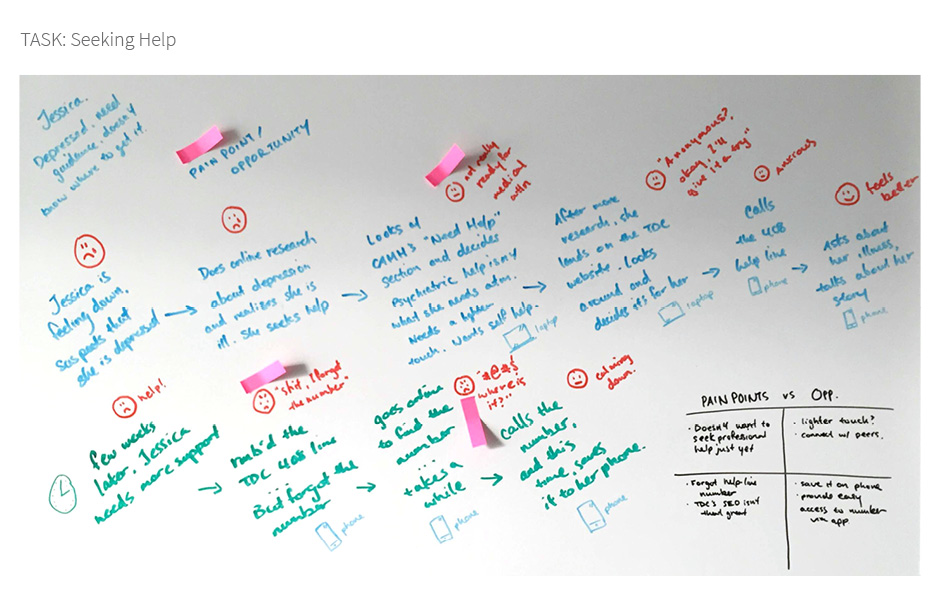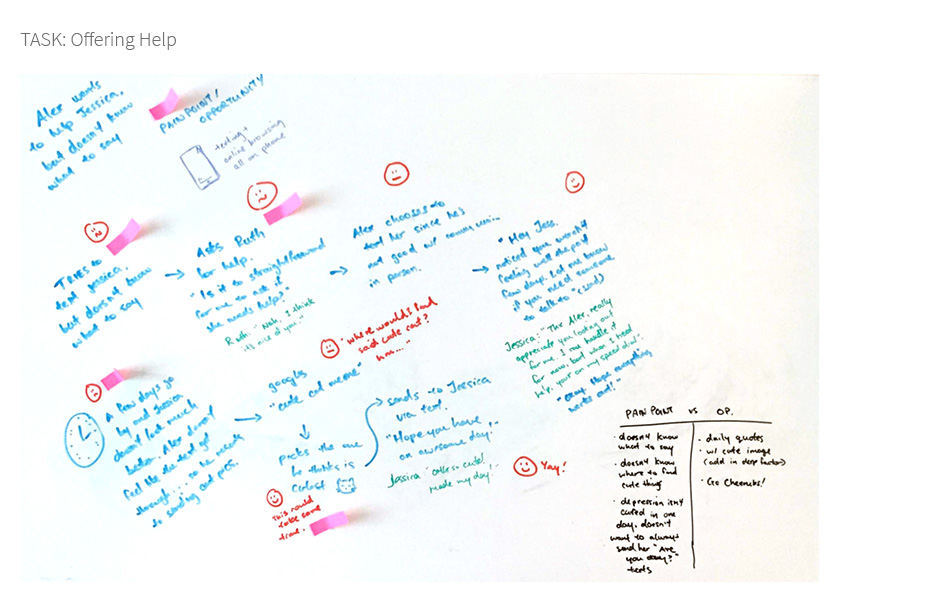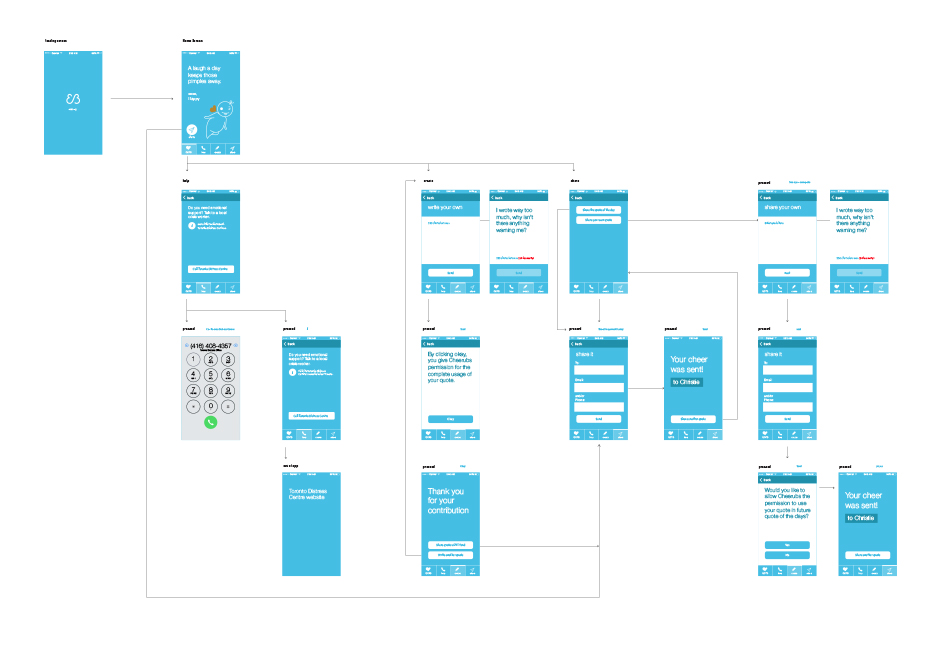LILLIAN JIA
Creator of things and interactions
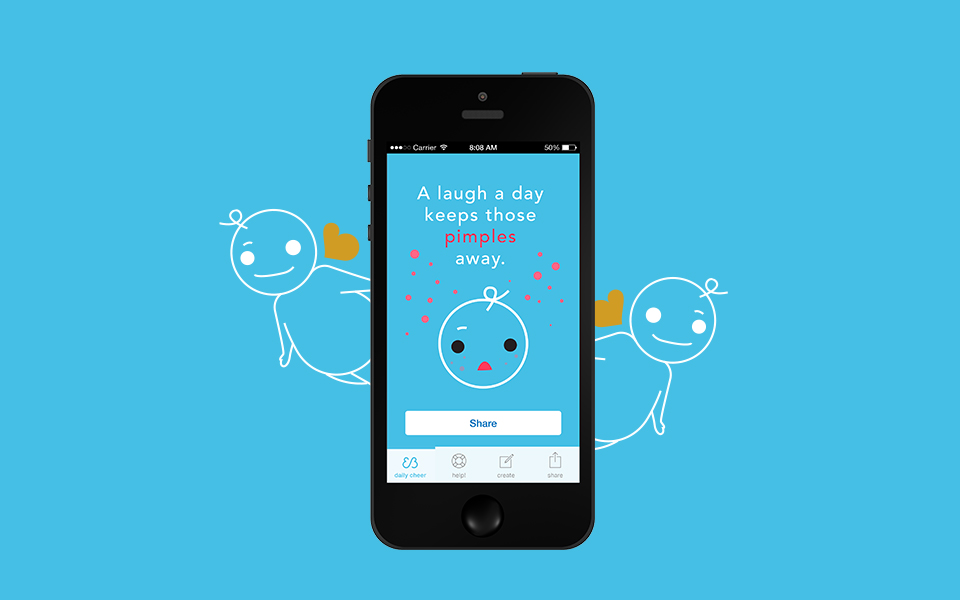
Cheerubs
Product Design
idea. design. illustration.
Cheerubs is a project I started while taking an UI/UX course in Brainstation: it is a daily inspiration app targeted towards users suffering from depression. It sends them a daily cheer, a cheerful quote, to–well–cheer them up. It would also allow users to send words of encouragement to let their friends know that they are there for them in the form of a personal “cheermail”.
User
My main users are people who are affected by depression; whether they have a depressed friend/family member, or they themselves are suffering from depression. My secondary user is honestly anyone who has a smartphone and can be inspired by cheesy daily quotes.
Research
Even before the course started I was interested in what made people unhappy. I asked anyone who would listen, and have time, on Facebook, at work, and social gatherings to participate in my online survey. The survey aimed to discover what people did when they are feeling down, what are their habits when they’re hurt, and what makes them feel better.

After about 30+ online responses, a few personal interviews, and countless hours of online research, I was ready to shape my product.
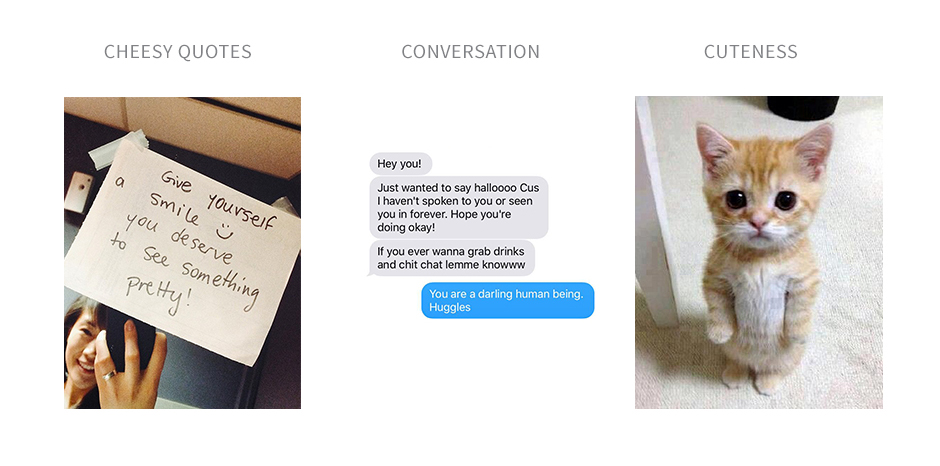
User Journey
There is no single “master” user journey when it comes to depression; everyone deals with it differently. One common trait all depressed users have is that they seek solace, but need comfort. The former because they are ashamed or just don’t want to bother anyone, and the latter, because we are only human. The major pain point is in between the two: fear. Many depressed users seek comfort in telling their story on forums where they can choose to remain anonymous. They also seek help via anonymous hotlines where they can chat with a counselor or even kind volunteers willing to lend an ear. They don’t want to broadcast their depression to the world. Friends and family want to help, but many are stumped as to how to start these conversation, others have doubts that they can even help; hence, no contact is made. That’s the major problem I want to solve with Cheerub: connection. More than anything, creating user journeys for my personas help me solidify product functions: providing users with an easily accessible ear; and providing people who want to help with a creative way of saying "Hey, cheer up! I'm here if you need me!".
Sketching and Wireframes
As with any design process, I started with sketching low-fidelity wireframes, got feedback from my peers, then it’s more wireframes. With the high-fidelity wireframes, I tested it with a few friends and colleagues using Invision. Invigilating a test was also quite an interesting learning experience. As the designer, it was sometime tough since there’s always an itch to tell them: “what I meant was”. But those are the moments you remember because if there’s a question during a test, it could be a potential design problem.
Design
At this point, the app flow and design was slowly shaping from all the research and wireframes and user test sessions. The last step was really just the visual design. Lucky for me, I was simultaneously working on the app branding. From research, I found that people (both male and female) generally are more open to anything that is cute and friendly–think of all the countless hours you spend on cat videos. Also, after talking to a few people suffering from clinical depression, I was told when they open up to someone, they’re not looking for logic, like “maybe you should try this” conversations–that’ll come later. The first thing they need is comfort and emotional support. Tell them “it’ll be alright”, or “it’s okay to feel this way”. SO, I created two playful, and sometimes silly, cherubs that tell users cheesy quotes, with the main purpose to solicit a smile–to cheer them up.
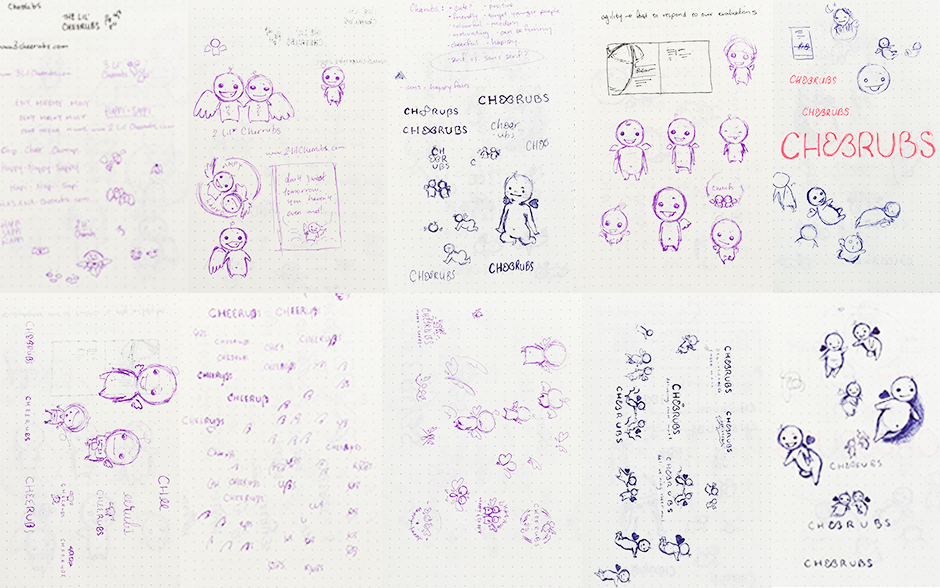
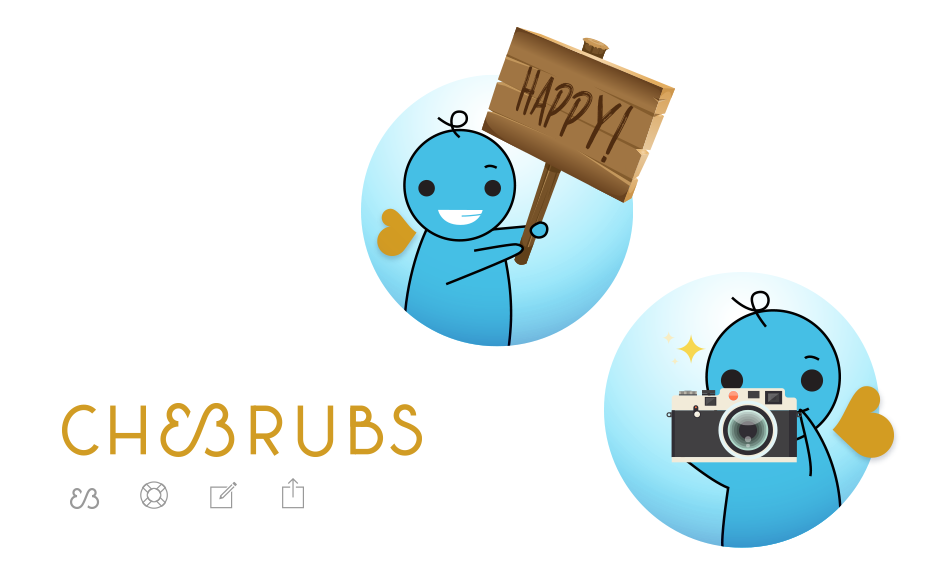
Conclusion
Other than all the above, the two biggest takeaways from working on Cheerubs are: designing a product is a collaborative and iterative process; and of course, test, test, and then test some more. And happiness shouldn’t be taken for granted. ;) Cheers!
